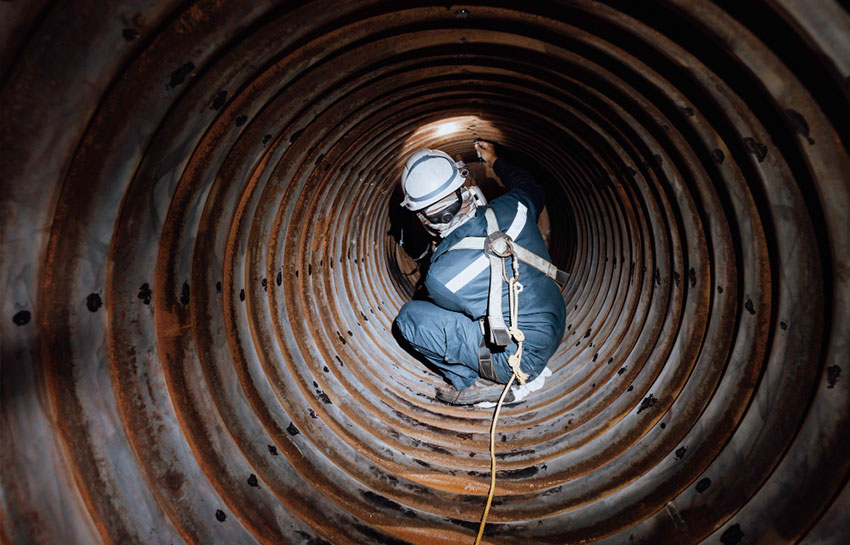
Automation Improves Confined Space Worker Safety
Many areas of a facility can be dangerous to human health — confined spaces are one of the most common. This is because they can develop into low-oxygen or explosive environments quickly. Most management systems depend on paper and pen systems for entry permits, but human error is often the root cause of deaths and injuries in confined spaces.
Practical and cost-effective digital monitoring of workspaces, whether short term, such as maintenance or construction work, or over the long term at fixed facilities, requires using the right equipment that meets the most dangerous environments, not the expected conditions.
What Is Confined Space?
The
Occupational Safety and Health Administration (OSHA) definition of a permit-required confined space includes the following characteristics:
- Large enough for workers to enter and perform work.
- Not designed for continuous occupancy
- Limited or restricted ingress/egress
Many assume that large areas cannot be confined spaces, but large tanks, such as the ones used to store oil and gas products, and even large excavations, fit this definition. With both of these, the atmosphere can become hazardous and lead to asphyxiation, among other dangerous living conditions.
Cleaning and maintenance of storage tanks is an obvious permit-required confined space, but even open-air areas, such as large excavations, can become hazardous due to poor ventilation and the presence of toxic air quality. Without air quality monitoring, these areas can become dangerous or deadly.
Making a Case for Automated Air Quality Monitoring for Worker Safety
Multiple
studies found human error, often due to unnecessary risk-taking by workers and their supervisors but also due to inadequate management processes, was the cause of worker fatalities and near misses. Even companies with clear guidelines and procedures can have fatalities at their job sites.
One method to reduce risk when managing air quality is automation. With automation, you use intrinsically safe sensors and tablets around a facility to have continuous monitoring. This immediately notifies management of atmospheres that are turning unsafe and allows for quick response and evacuation.
Case Study 1
Nitrogen is the largest component of the air we breathe. But it is also an inert gas often used to create an oxygen-depleted atmosphere for process equipment maintenance and construction at oil and gas facilities. This was the situation for an energy company in
Delaware. In short, employees did not adhere to permit-required confined space requirements, and a worker entered an oxygen-depleted space without a safety harness or self-contained breathing air respirator. It is possible he fell into the confined space while trying to retrieve a dropped roll of duct tape and became overcome by the atmosphere that measured at zero for oxygen. His would-be rescuer entered the confined space and soon succumbed to the same zero-oxygen atmosphere. The confined space-trained rescue team evaluated the atmosphere before entering.
Case Study 2
Even large open excavations can become dangerous. In one such situation, the atmosphere went into a low-oxygen state due to a chlorine leak on a no-wind day.
Chlorine gas is about two and a half times heavier than air, so it will sink and spread rapidly. In addition, the atmosphere can become explosive when it comes into contact with common construction materials, such as fuels and acetylene. For this site, the chlorine smells alerted workers to leave the excavation.
Automation Solutions
Human error, whether because of ignorance or bravado, can lead to deadly consequences for the worker engaging in risky behavior and often the would-be rescuer. Automation can take the guesswork out of confirming if an atmosphere is safe. Improve worker safety even in the most dangerous Class I, II, III Division 1 and ATEX/IECEx Zone 1 worksites with Aegex digital solutions. Contact
Aegex Technologies for a customized package for your facility today.

